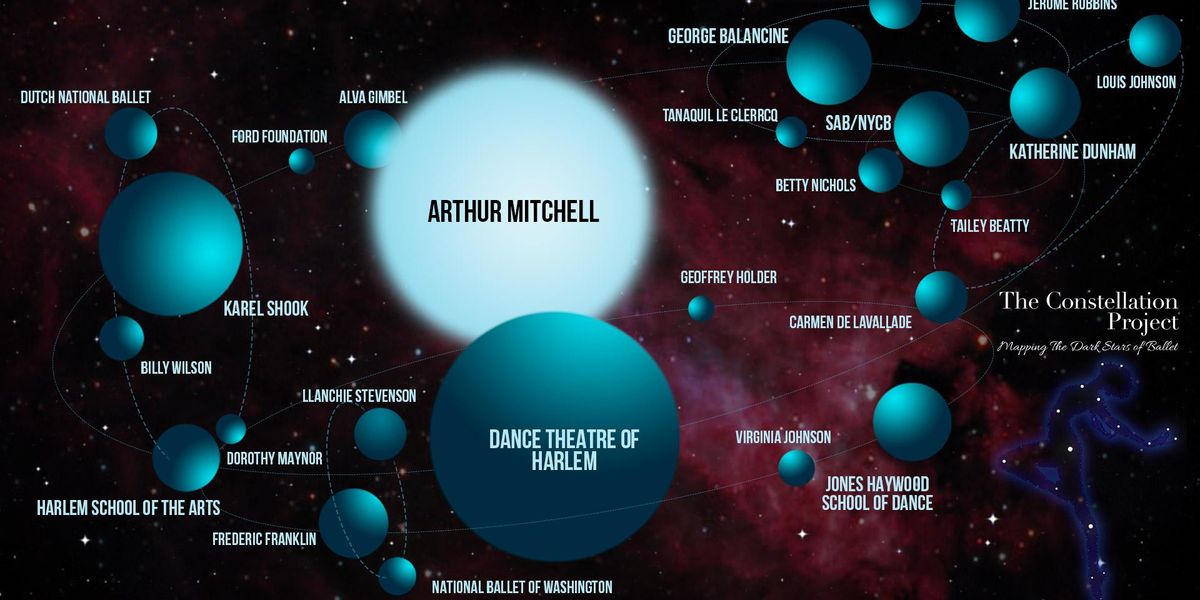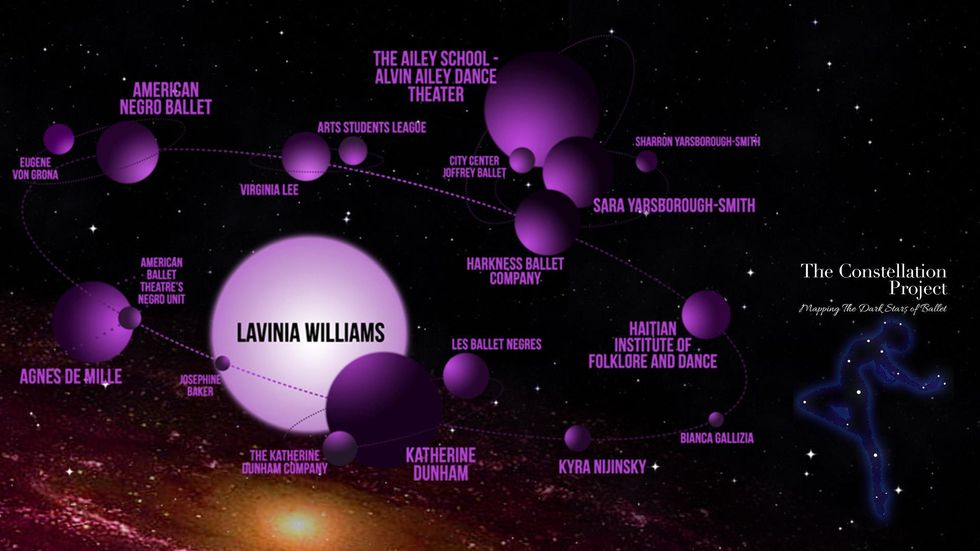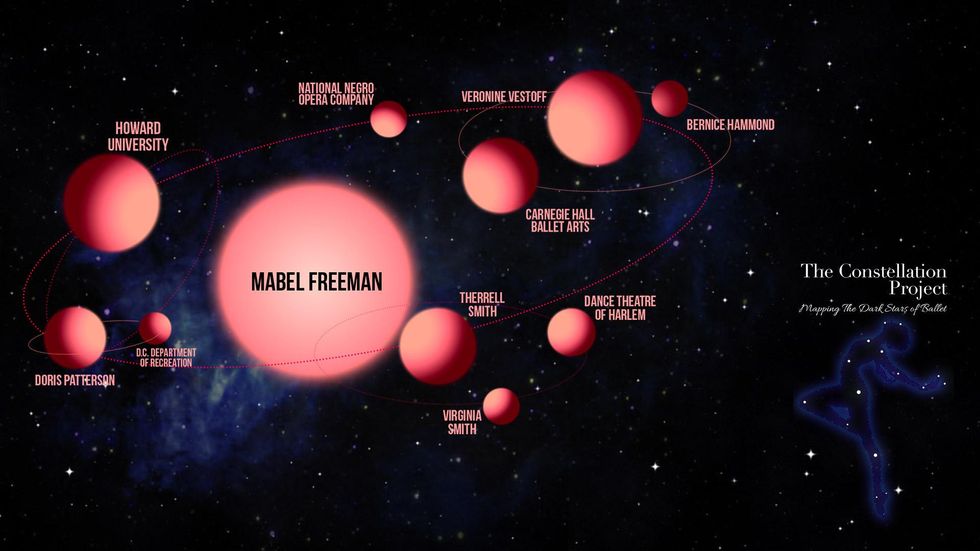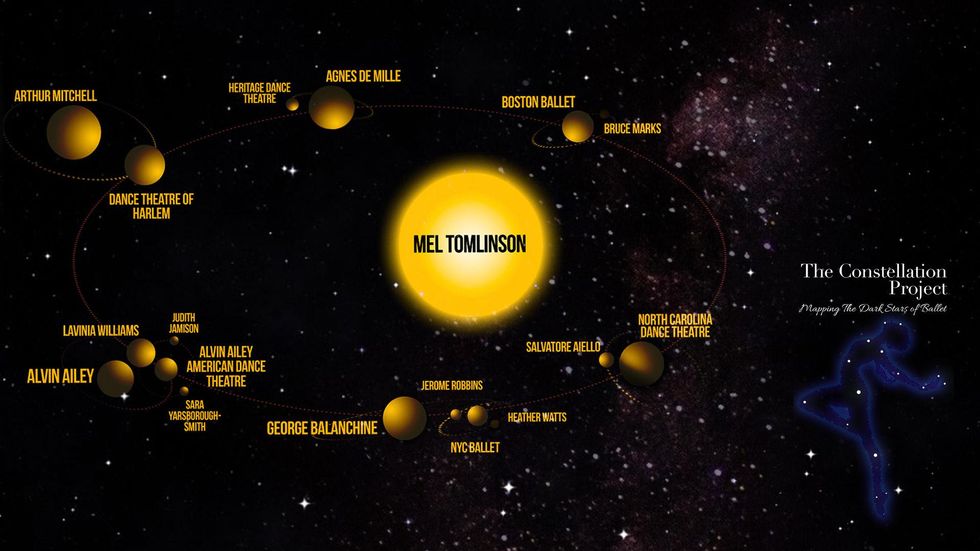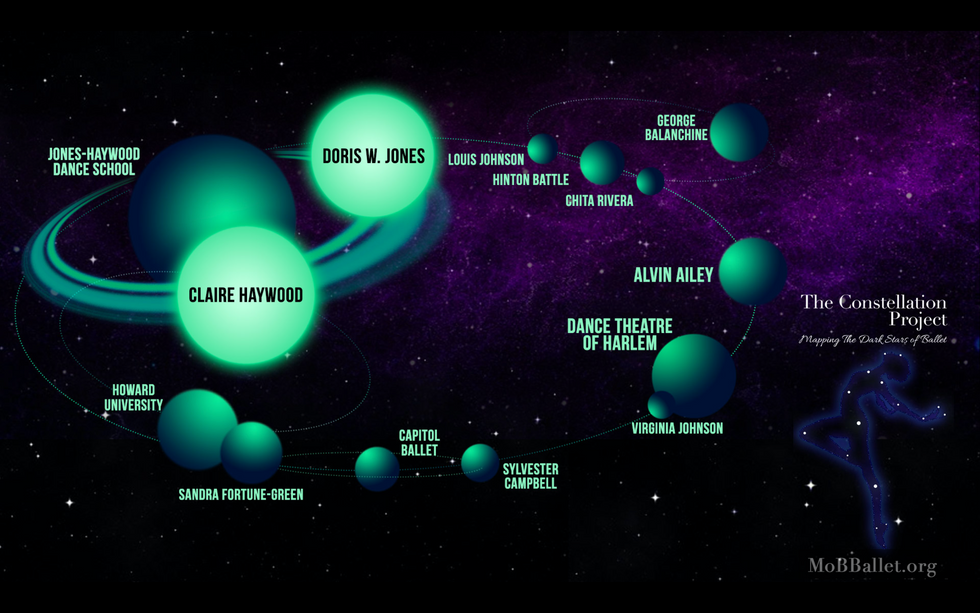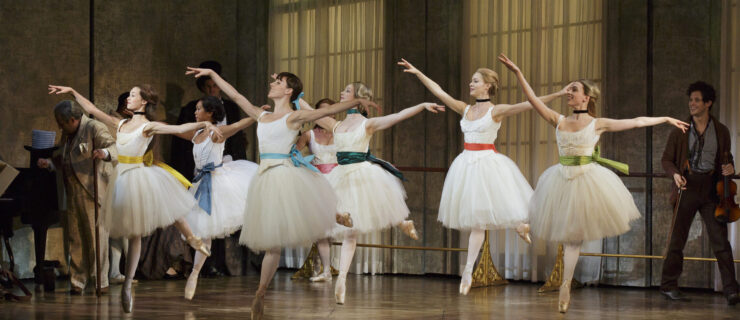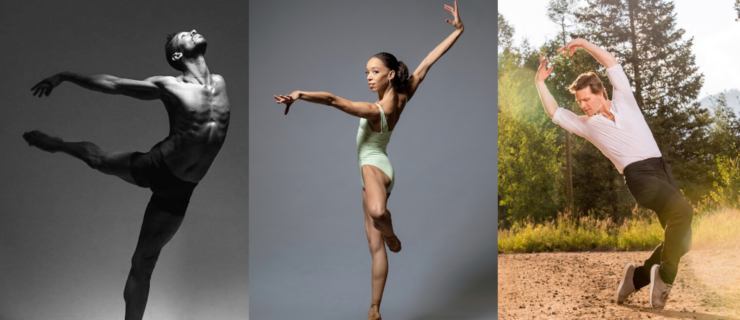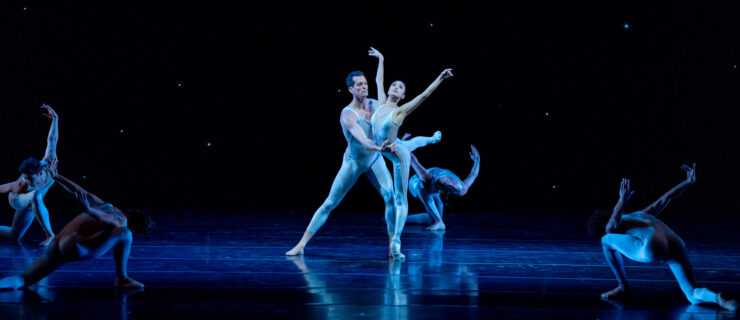Memoirs of Blacks in Ballet's "Constellation Project" Maps the Complex Histories of 6 Dance Pioneers
Last week, Memoirs of Blacks in Ballet celebrated the start of Black History Month with the launch of The Constellation Project, a star-studded online exhibition of dance history. The project maps the lives of six influential Black dancers—Arthur Mitchell, Mel Tomlinson, Lavinia Williams, Mabel Jones Freeman, Doris Jones and Claire Haywood—across a digitally rendered galaxy of historical events, institutions and more. The result is an educational experience that, much like its galaxy-inspired title, will no doubt only continue to grow.
Writer and activist Theresa Ruth Howard founded MoBBallet in 2015 with a fairly simple mission: to make the invisible visible. She started with projects like her Roll Call of Black dancers and the Timeline that traces their presence back into the 19th century. These designs highlighted Black artists as individuals, but the more that Howard learned, the more complex these stories became.
“We don’t dance in a vacuum,” Howard explained recently, “and history is not as siloed as it’s presented when we teach it.”
 Mel Tomlinson, one of the artists profiled by MoBBallet’s Constellation Project, danced for Dance Theatre of Harlem, Heritage Dance Theatre, Alvin Ailey American Dance Theatre, New York City Ballet, North Carolina Dance Theatre and Boston Ballet.
Mel Tomlinson, one of the artists profiled by MoBBallet’s Constellation Project, danced for Dance Theatre of Harlem, Heritage Dance Theatre, Alvin Ailey American Dance Theatre, New York City Ballet, North Carolina Dance Theatre and Boston Ballet.Courtesy Dance Magazine Archives
One example, she says, is the way that renowned 20th-century choreographer Anthony Tudor—a white man—also spent time teaching private dance classes to Black women in Philadelphia.
“What does that do?” Howard asks. “Does it change the way that we perceive what ballet is and how the world actually worked?”
This question guided the start of MoBBallet’s Constellation Project, whose full title includes “Mapping the Dark Stars of Ballet.” Howard, along with MoBBallet’s digital art director Natasha Hulme, conceptualized the dancers in orbit with each other’s influences. Howard had also partnered with Janine Parker, the artist in residence at Williams College, to co-teach a course that would eventually lead to The Constellation Project’s launch.
The five students in Howard and Parker’s class chose their own subjects and then spent the semester conducting expansive research. “I didn’t say, ‘Oh, no, that’s not relevant, that’s not about ballet,'” Howard explained. “It ended up being more anthropological—it looks at Black culture and Black life.”
The approach shifted the way the students looked at history, Howard said: “It wasn’t as one-dimensional. It automatically made them think about what’s not being said and who is not being represented.”
Howard hopes The Constellation Project will encourage a shift in the way we view, teach and categorize dance history and normalize more conversations like these. She wants dancers, educators, directors and choreographers to start actively looking for what has been invisibilized. On the site, users start by choosing one of six galaxies that surround each featured artist and then take step-by-step tours of the stars that represent overlapping influences within each orbit. For example, near Lavinia Williams, who danced for the American Negro Ballet and Katherine Dunham Company, is a star that represents Virginia Lee, the woman who provided Williams’ scholarship to the Art Students League, where she had trained in her childhood. The Art Students League has its own star, which also orbits around Lee and Williams. This continues, with each intersection moving in sleek animation, until the user has seen a galaxy made up of dozens of stars with interwoven orbits. At each stop along the way, users can click to read a few paragraphs of information and find more sources.
“It’s designed to be like a rabbit hole,” Howard says “so that you just trip and fall down and you find all these interesting things.”
As she adds more artists with their own orbits of history, Howard hopes to collaborate with a few more colleges, and one day she would love to see the exhibition in a physical space—maybe even the National Museum of African American History and Culture in Washington, DC.
For now, though, the project will continue to grow online, where everyone can navigate it easily.
“History is for everybody,” Howard says. “And everybody’s history is for everybody. It really does involve all of us almost all the time.”
